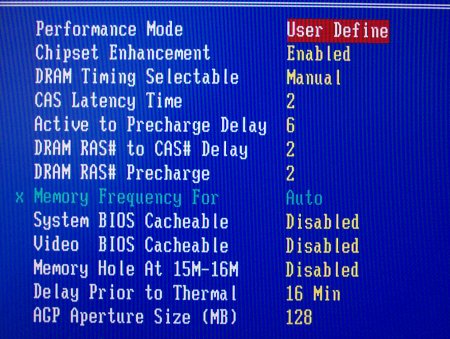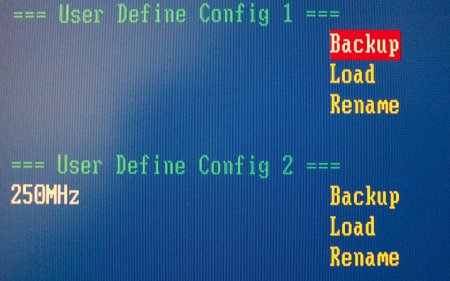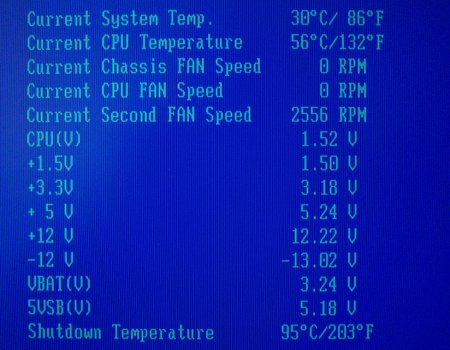BIOS
The days of boards providing mediocre BIOSes is well and truly over. Even Intel now offer its own boards with an enthusiast-orientated BIOS.

DFI's BIOSes now come under the umbrella term of GenieBIOS. The voltage and CPU options are kept in one sub-screen and memory related timings in another. Almost by its very nature, the Springdale chipset lends itself to overclocking. The Super PATCH is DFI's answer to other companies' PAT-like performance implementations on Springdale chipsets. Our testing has shown them to be every inch as good as any Canterwood. The CPU clock ratio will only present itself if an ES processor is installed. AGP/PCI/SATA frequencies are shown as default speeds in the above picture. What's worrying, and what you'll learn in a moment, is that the AGP / PCI frequencies don't appear to be locked - that's bordering on the criminal for an i865PE board. Voltage-wise, there's plenty on offer with 1.975v for the CPU and 2.9v for the DIMMs. Like most Intel-based motherboard, the DFI i865PE INFINITY tended to under-volt the Vcore, so it's just as well that one has plenty in reserve. Anything over 1.7v, long term, is plain dangerous to the health of the CPU, irrespective of cooling used.

The usual DRAM latency settings present themselves in the DFI i865PE. Note that the memory speed, in MHz terms, cannot be adjusted once the 'Super PATCH' setting has been invoked. Without it, the usual 1:1, 5:4, and 6:4 FSB-to-DRAM ratios are available. The latter two are a must if a highly overclockable or unlocked processor is earmarked as the host cpu. That's unless you're willing to invest in PC4000+ memory.

DFI uses a technology dubbed CMOS Reloaded (nice movie tie-in, huh ?). The idea is a decent one, as all simple ones are. The board is geared up towards the enthusiast who will no doubt tweak the BIOS to maximum performance settings, something which can take a deal of time to accomplish. What's worse than losing all that carefully inputted data after pushing the system too far ?. DFI allows the user to save a couple of BIOS configurations that can be restored at the touch of a few keys. Assuming that the settings were stable in the first instance, you should simply be able to boot back into an OS with a tuned BIOS. In practice, saving a configuration took about 10 seconds and restoring it took around 5 seconds. That's certainly a lot better than having to manually key in each parameter individually after locating the paper that you wrote each one down on. A decent and thoughtful inclusion.

The hardware monitoring section seemed to report a CPU temperature around 5 - 7c higher than either an ABIT IC7-MAX3 Canterwood or EPoX 4PDA2+ Springdale motherboard (using the same cooling). According to motherboard monitor, the load temperature rocketed up to 68c under moderate load. A BIOS revision may be in order, or the comparison boards may have erroneous readings. A pretty robust BIOS with a nice touch.









